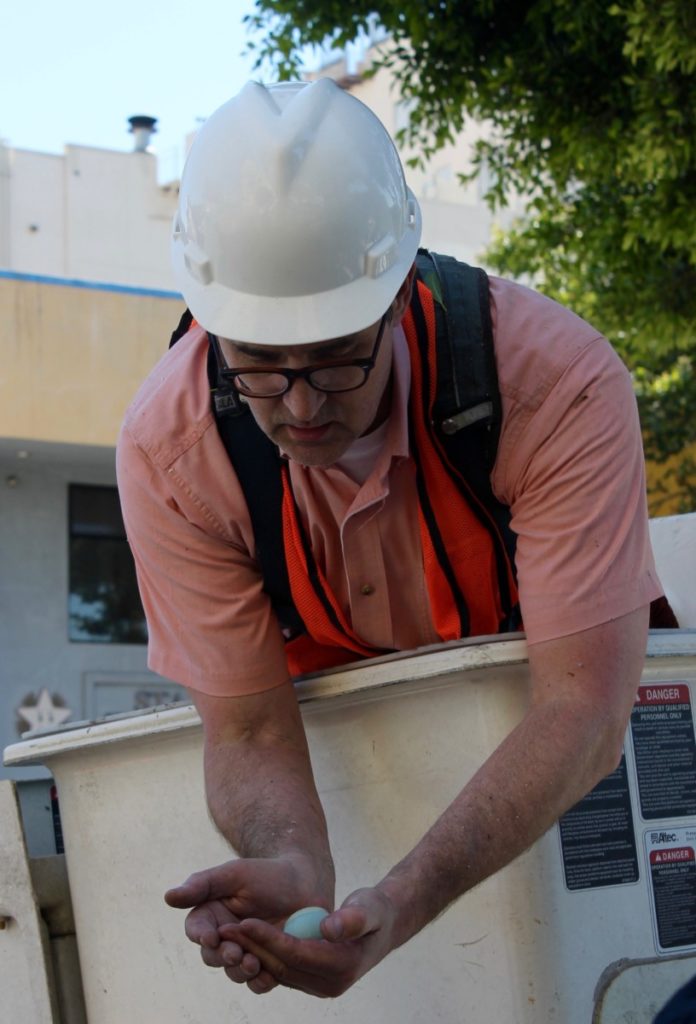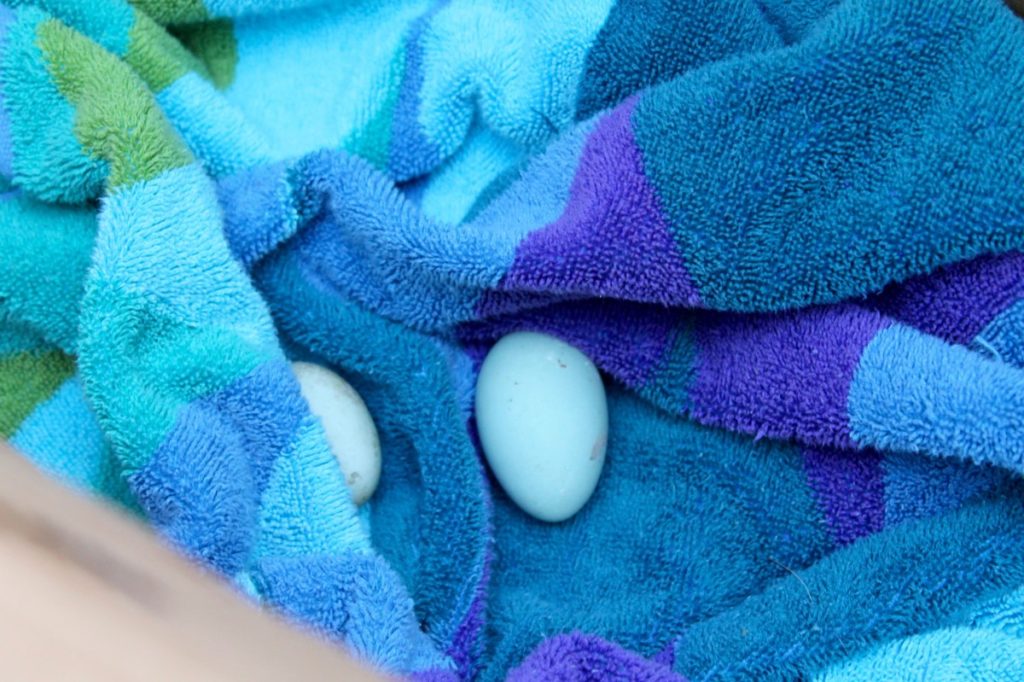Oakland saves herons while removing nest tree
By Ilana DeBare
What a difference three years makes!
In spring 2014, Oakland post office officials thoughtlessly decided to cut foliage in the Bay Area’s largest heron rookery at the height of nesting season — destroying nests and leaving young birds injured and homeless.
This week, the City of Oakland had to remove a hazardous tree in that same rookery. But city staff partnered with Golden Gate Bird Alliance and International Bird Rescue in a humane, well-planned initiative to ensure that birds, eggs, and nests were protected.
THANK YOU to Oakland city staff — especially the folks in Animal Control; the Creeks, Watershed & Stormwater division; Tree Services; Traffic Control and Maintenance; and Drainage Maintenance!
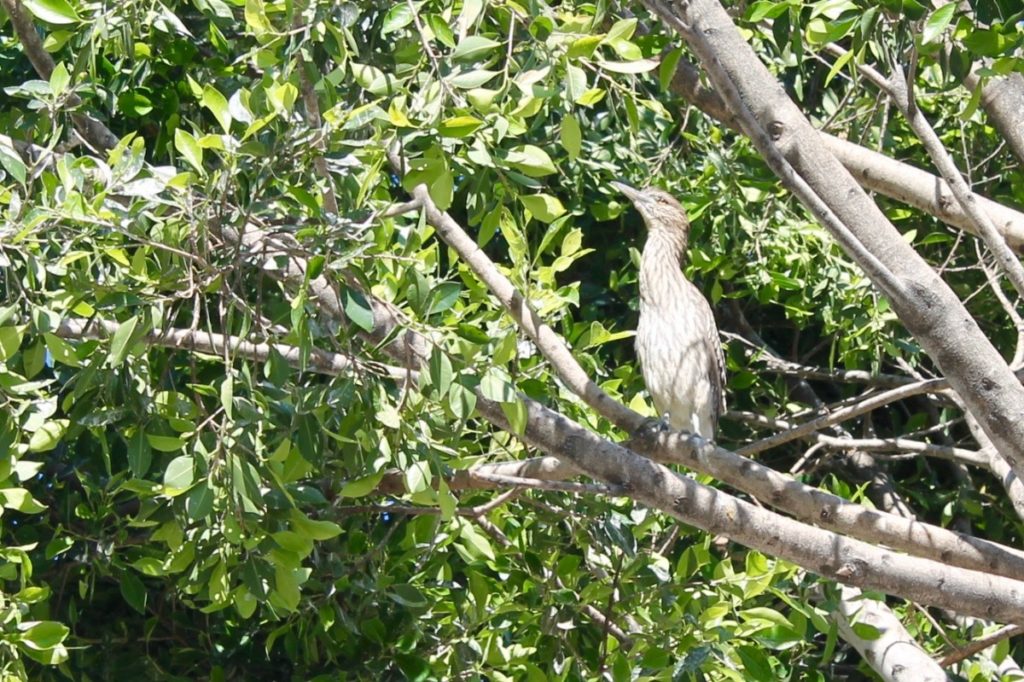
Here’s the full story:
Over the past decade or so, the leafy ficus trees lining the streets near Alice and 13th Streets became home to the Bay Area’s largest nesting colony of Black-crowned Night-Herons and Snowy Egrets. Over 150 pairs of birds nest and raise young in the thick canopy, foraging for fish and other prey at nearby Lake Merritt and the Oakland Estuary.
The colony received little public attention until the disastrous tree trimming incident in 2014, which made national headlines.
In the wake of the trimming debacle, Golden Gate Bird Alliance launched a multi-year campaign to protect and educate the public about these dramatic-looking birds.
The problem went deeper than thoughtless tree trimming. The street trees are a dangerous nesting site: Young, not-yet-fledged birds that fall from the branches face broken bones on the hard concrete and deadly automobile traffic.
In 2015, we mounted an educational campaign with volunteer docents leading tours of the rookery, multi-lingual posters in nearby storefronts, a bilingual brochure on bird-friendly tree care, and a chalk art “flash mob” creating sidewalk art about the herons.
In 2016, we created a three-way rescue partnership with Oakland Zoo and International Bird Rescue. GGBA volunteers monitored the area for fallen birds; Oakland Zoo technicians provided speedy rescue and triage; then IBR provided long-term rehab and release into more suitable wild habitat along the Bay.
This year we continued that partnership. And two weeks ago, when one of the large rookery trees suddenly split in half and fell, GGBA, Oakland Zoo, and IBR all joined Oakland city staff in an emergency effort to rescue young birds from the fallen jungle of branches and leaves.
The joint effort was a success: Three birds were found dead on the scene, but 14 were taken to IBR and 11 of them are still alive and recovering well.

But the remains of the fallen tree — still a tall, bushy canopy filled with active nests — presented a hazard for passersby. It needed to come down.
Oakland city staff worked closely with us to to develop a removal plan that would protect birds’ lives. They delayed the removal long enough for many of the remaining young birds to fledge. Then they worked with us to coordinate a complex, well-planned operation that involved over a half dozen city divisions and local wildlife organizations:
- GGBA volunteers Alison Garvin and Linda Vallee were on hand, together with Executive Director Cindy Margulis, to rescue the remaining young birds.
- IBR Response Services Manager Michelle Bellizzi was there, ready to transport birds to their world-class rehab facility in Fairfield.
- Straus Carpet donated used carpet padding to cushion the landing for any birds that might fall.
- Oakland Zoo provided hay bales for additional cushioning.
- Oakland public works staff cordoned off the area from traffic and brought a cherry picker to reach into the high branches.
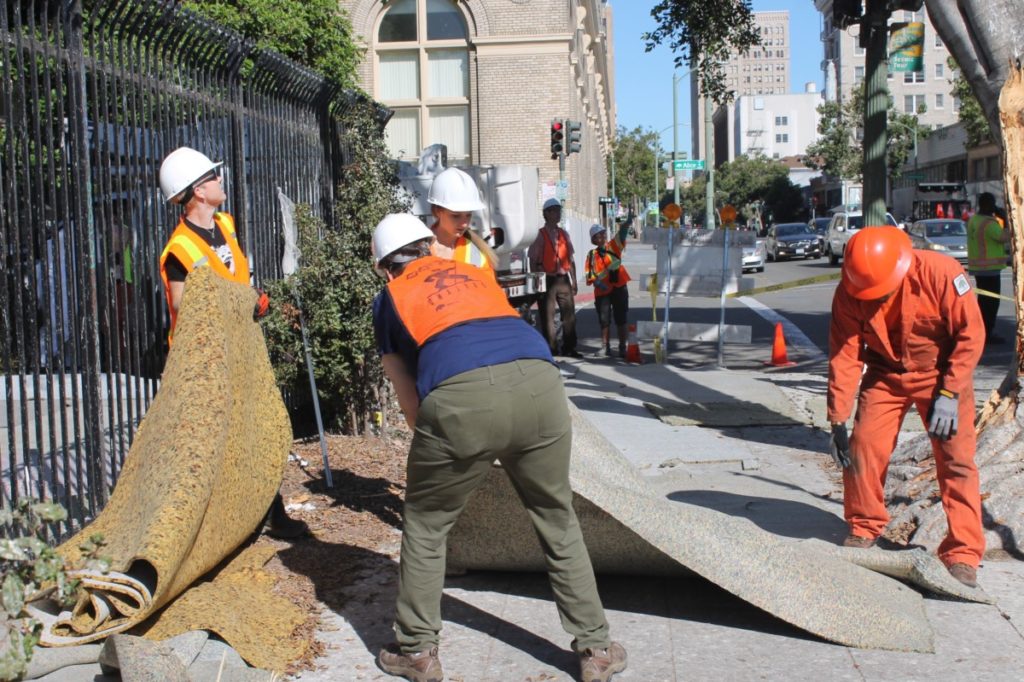

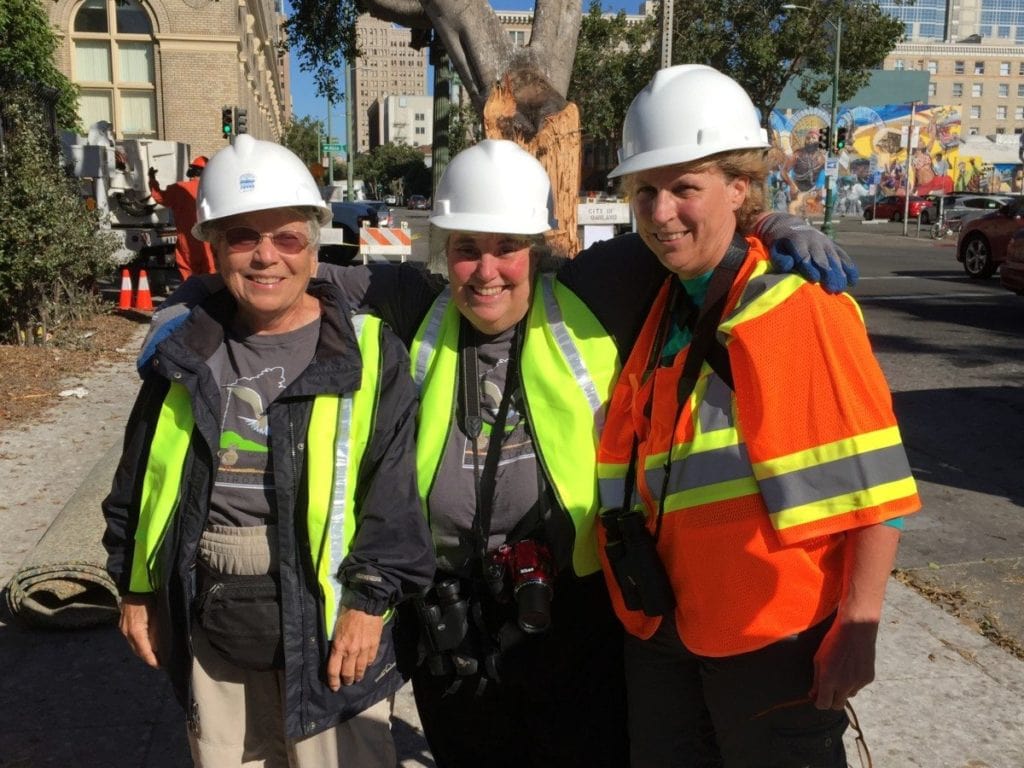
The operation started around 9 a.m. on Thursday. People peered with binoculars into the dense green thicket, looking for herons. Then Eric Zuercher, Deputy Director of Animal Control, went up in the cherry picker to look deeper into the foliage and extract birds and nests.
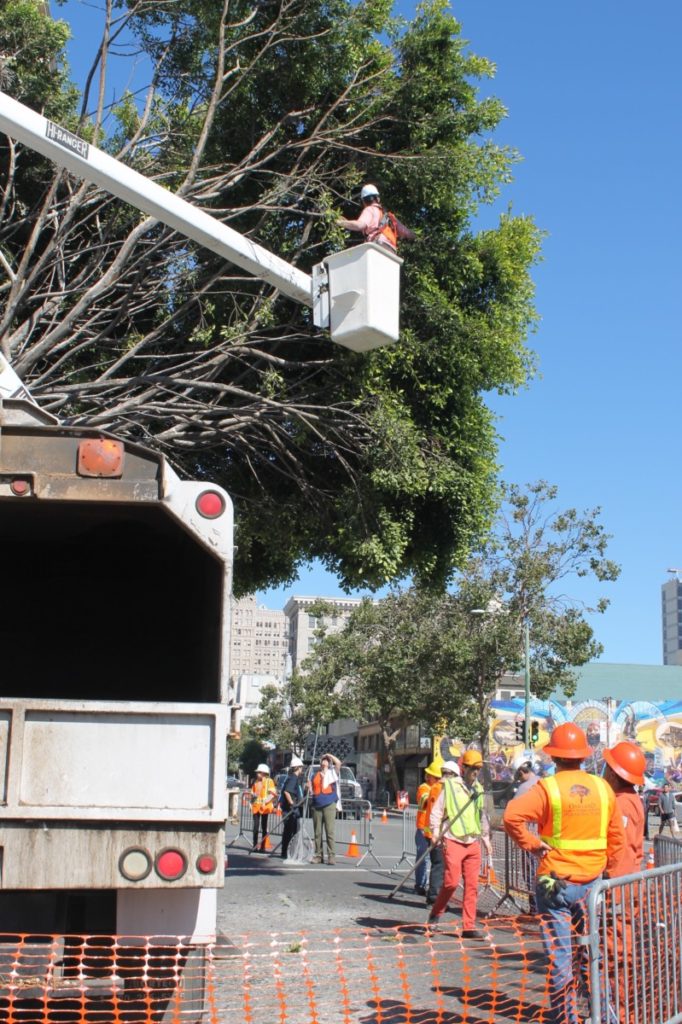
Zuercher had plenty of experience handling birds — just not 30 feet above the ground in the waist-high bucket of a cherry picker.
“It’s a little tense,” he acknowledged during a break. “I’m not that fond of heights, and the bucket is a little wobbly. You just have to stay focused on what you’re doing.”
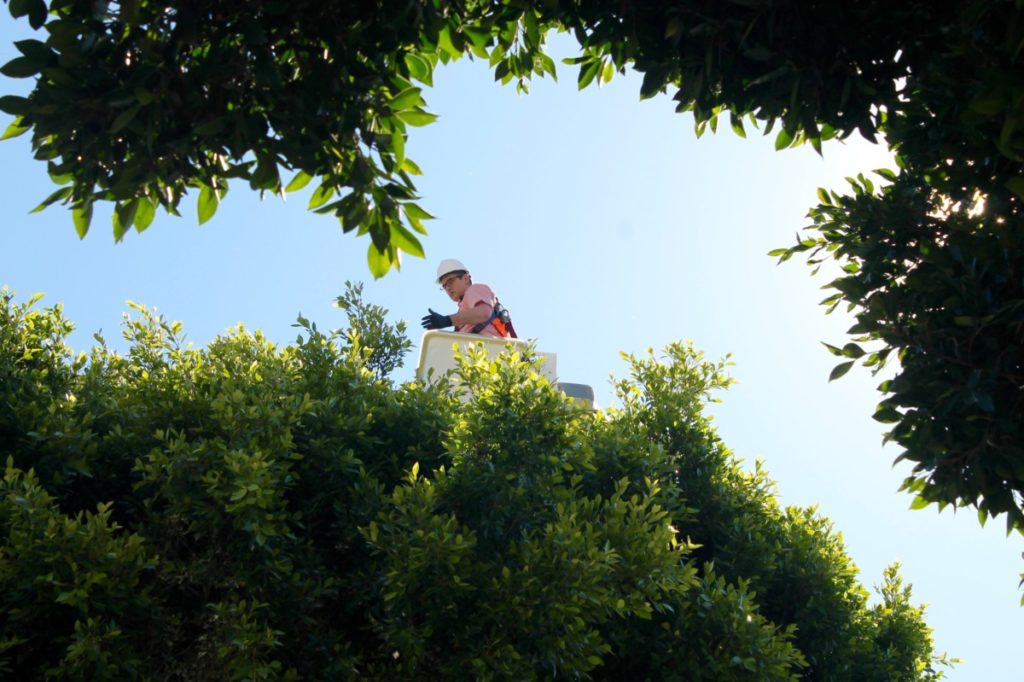
The hubbub drew onlookers — including a news crew from ABC7. (Click here to view their news report.)
By the end of the day, the well-orchestrated effort had safely captured three not-yet-fledged birds — two night-herons and one egret — and sent them off to IBR. Zuercher also retrieved two eggs that were taken to IBR’s incubator. Other young birds in the canopy turned out to be ready to fledge, and made a short flight to safe berths in other nearby trees,
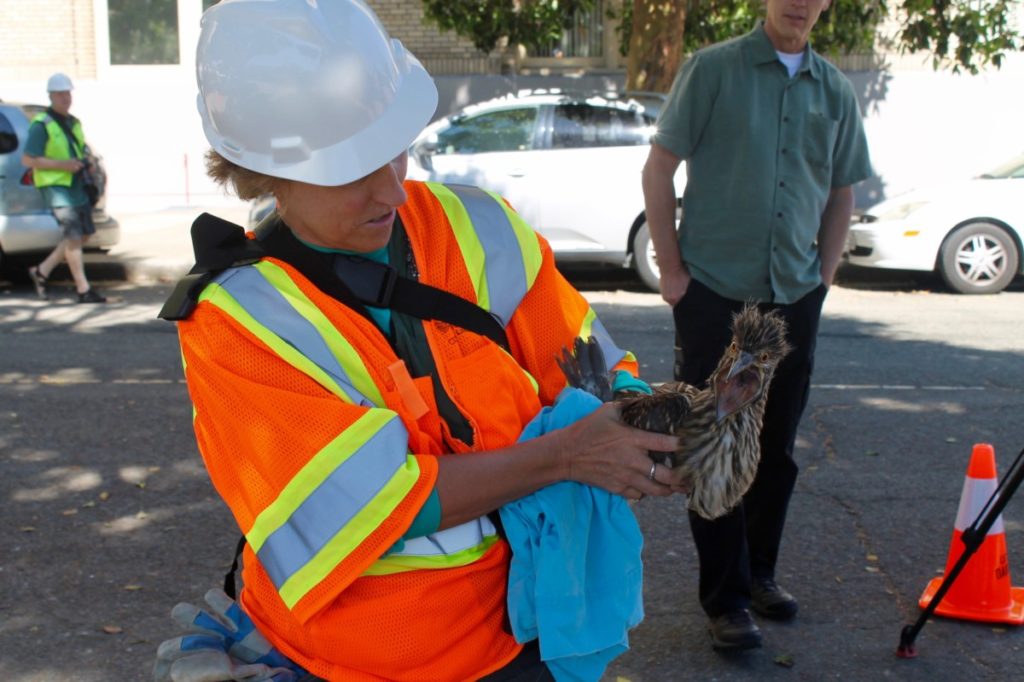
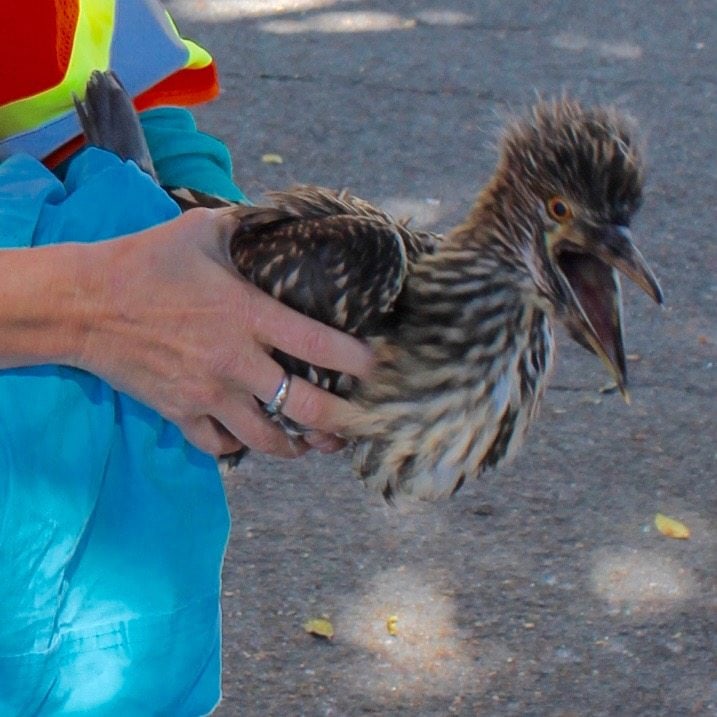
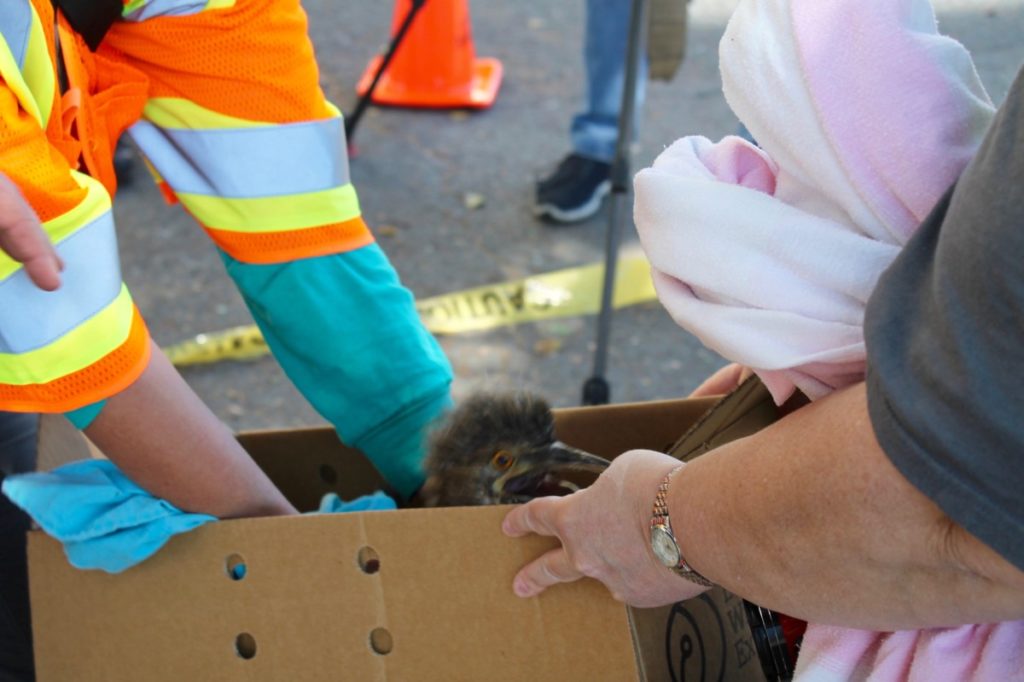
Terri Fashing, a watershed program specialist for the city, helped coordinate the effort — even though she’d only been working for the city for two weeks.
“It’s been great seeing all these different City of Oakland divisions with a can-do attitude,” she said. “This took a lot of coordination in a short period of time. We had great coordination with Animal Control and with Audubon. Cindy (Margulis) has been in there like she’s city staff, making phone calls and setting things up.”
We at Audubon are tremendously appreciative to everyone involved in today’s effort and in our ongoing work to protect the herons — from city staff, to IBR and the Zoo, to our own volunteers, to nearby residents who have bonded with their avian neighbors,
What happens next? The street trees are not an optimal site for a rookery. And the blocks containing the rookery are slated for development. So we’re working with city staff and the developers to promote safer, more appropriate nesting sites for 2018.
Heron biologists have identified several good nesting trees along Lake Merritt. As next year’s breeding season approaches, we’ll work with the city and biologists to encourage the herons and egrets to settle there, using taped heron calls, decoys, and empty nests left over from this season.
Some of those empty nests may be ones recovered in today’s tree removal!
We’ll keep you posted on how it goes…. stay tuned.
